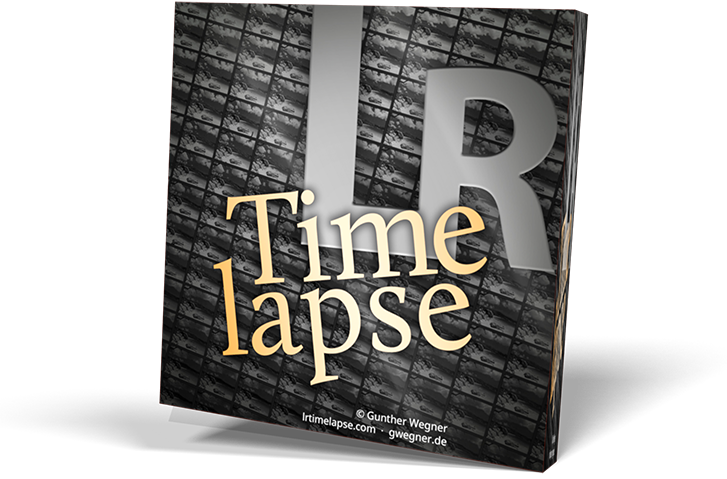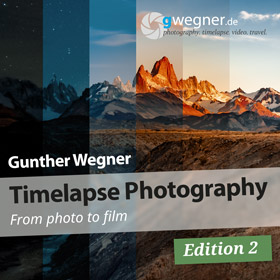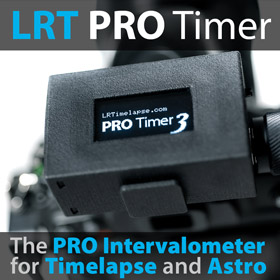Posts: 441
Threads: 126
Joined: Nov 2015
.tiff files
Posts: 11,358
Threads: 197
Joined: Feb 2011
Hi Rodrigo, this is not the right approach. The LRTimelapse workflow works on Raw files + Metadata. You cannot mix in pixel-edited files like TIFF. TIFF is also not supported by LRTimelapse.
The way to add such pixel based edits (if needed) would be to do the regular workflow on the Raw files, then export the intermediary sequence from Lightroom (or via the internal export) and then do the pixel based editing on the intermediary sequence. After editing the exported files, you can render that intermediary sequence via File / Render Video.
I've shown a similar approach in the expert tips #10: https://lrtimelapse.com/tutorial/expert/
Instead of After Effects you could also do Photoshop on single images.
The way to add such pixel based edits (if needed) would be to do the regular workflow on the Raw files, then export the intermediary sequence from Lightroom (or via the internal export) and then do the pixel based editing on the intermediary sequence. After editing the exported files, you can render that intermediary sequence via File / Render Video.
I've shown a similar approach in the expert tips #10: https://lrtimelapse.com/tutorial/expert/
Instead of After Effects you could also do Photoshop on single images.
Posts: 4
Threads: 0
Joined: Nov 2023
Hi Gunther,
Awesome experience with LRT Pro so far. I'm just stuck on this part of the workflow. I followed exactly the process you describe above to edit in After Effects - went through the LRT workflow on the raw files, exported as tif sequence via lightroom, edited in AE, and then rendered the tif sequence from AE with the LRT file name. When I then go back into LRT to render, as you recommend in your video, I can't see any way to render the folder with the intermediary tif files from AE. Its just not recognized in any way. I'm sure I'm doing something wrong but I can't figure out what! I know I can always just render from AE but I'd like to work out how to use the LRT option.
Many thanks
Awesome experience with LRT Pro so far. I'm just stuck on this part of the workflow. I followed exactly the process you describe above to edit in After Effects - went through the LRT workflow on the raw files, exported as tif sequence via lightroom, edited in AE, and then rendered the tif sequence from AE with the LRT file name. When I then go back into LRT to render, as you recommend in your video, I can't see any way to render the folder with the intermediary tif files from AE. Its just not recognized in any way. I'm sure I'm doing something wrong but I can't figure out what! I know I can always just render from AE but I'd like to work out how to use the LRT option.
Many thanks
Posts: 11,358
Threads: 197
Joined: Feb 2011
Best name the export folder with suffix LRT_
Then go to file/render video in LRTimelapse (menu) and in the render dialog on the top right select the option to render a ore exported sequence. Them click on Select (or choose) to open a folder chooser where you can select the LRT_ folder that you exported.
Then go to file/render video in LRTimelapse (menu) and in the render dialog on the top right select the option to render a ore exported sequence. Them click on Select (or choose) to open a folder chooser where you can select the LRT_ folder that you exported.

Posts: 6
Threads: 2
Joined: Apr 2021
Posts: 6
Threads: 2
Joined: Apr 2021
Most of my time-lapse photography is aurora, and while I do my best to avoid locations where headlights from passing cars interfere, sometimes that's not practical. Before seeing this post, I dealt with editing headlights out this way:
1. Images imported into LRT as normal, key frames, edits, auto transition, de-flicker applied.
2. After reading all metadata in LR, instead of exporting intermediary files, I opened the problematic files with headlights in PS, and used a mask from the previous frame to fix the problem files and save as a TIFF in the original LR directory. Back in LR, I used the Stacking command to collapse all stacks, so now my LR directory has a combination of RAW and TIFF files.
3. Export LR files using the normal LRT script to create intermediary files (as TIFF) in this case. I found that only the TIFF file in each stack was exported.
4. The final intermediary files rendered properly, and results were very similar to your method using AE clone stamps
What I like about this method, is the headlight edits are preserved in LR, so if I need to re-edit anything in the future, I don't have to repeat the tedious masking process again. I don't have AE and use FCPX to add transitions, music, and final touches. Also, I can discard the large intermediary files to conserve space.
Do you see any problem with this method? I've only processed one time-lapse sequence this way so far, but it seemed to work well. In the past, I would discard all headlight frames, and use transitions to blend the remaining sequences together to keep the final video smooth. Using this method, I should be able to salvage some good aurora clips with headlights, headlamps, or other distracting foreground elements.
1. Images imported into LRT as normal, key frames, edits, auto transition, de-flicker applied.
2. After reading all metadata in LR, instead of exporting intermediary files, I opened the problematic files with headlights in PS, and used a mask from the previous frame to fix the problem files and save as a TIFF in the original LR directory. Back in LR, I used the Stacking command to collapse all stacks, so now my LR directory has a combination of RAW and TIFF files.
3. Export LR files using the normal LRT script to create intermediary files (as TIFF) in this case. I found that only the TIFF file in each stack was exported.
4. The final intermediary files rendered properly, and results were very similar to your method using AE clone stamps
What I like about this method, is the headlight edits are preserved in LR, so if I need to re-edit anything in the future, I don't have to repeat the tedious masking process again. I don't have AE and use FCPX to add transitions, music, and final touches. Also, I can discard the large intermediary files to conserve space.
Do you see any problem with this method? I've only processed one time-lapse sequence this way so far, but it seemed to work well. In the past, I would discard all headlight frames, and use transitions to blend the remaining sequences together to keep the final video smooth. Using this method, I should be able to salvage some good aurora clips with headlights, headlamps, or other distracting foreground elements.
Posts: 11,358
Threads: 197
Joined: Feb 2011
This is an interesting approach, however I find it a bit complicated and prone to errors (to advertise it to others) and also my fear would be to get small deviance in color rendering and/or crop/image size between RAW and TIFF in Lightroom. Especially if the image sizes don't match to the pixel, the renderer might fail. But personally I don't have experience since I never tried this.
Please keep us posted about your approach once you did more work with it. I'm curious to hear if it works reliably!
Please keep us posted about your approach once you did more work with it. I'm curious to hear if it works reliably!

Posts: 6
Threads: 2
Joined: Apr 2021
Posts: 6
Threads: 2
Joined: Apr 2021
Thanks for your reply Gunther, I'll keep working with this and report back. I appreciate all your work with this software, and your excellent customer service!




